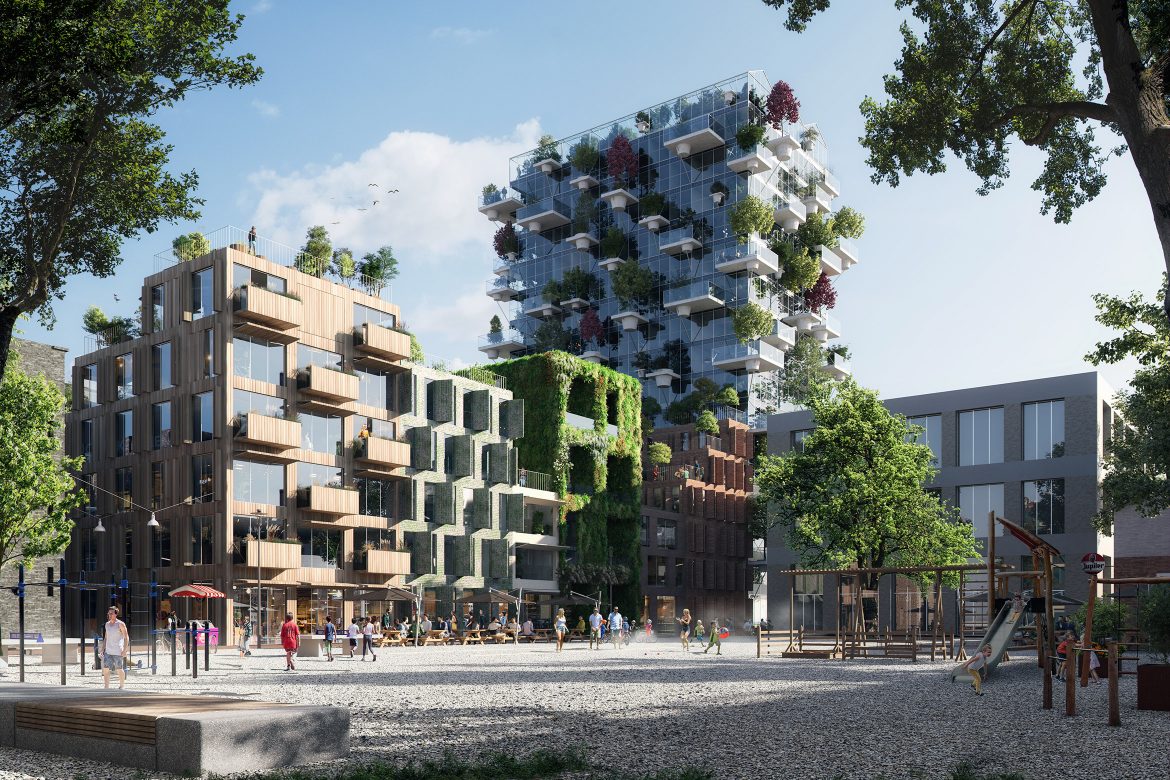MVRDV has revealed its design for De Oosterlingen, a block of seven sustainable residential buildings on Amsterdam’s Oostenburg Island. The project is prominently located at the entrance to the island, which is a formerly industrial area rapidly developing into a lively residential district. Designed for real estate developer Being, the buildings in the barcode composition form a clear family, but each has its own character, with varying heights, roof shapes, and façades made of wood, glass, recycled brick, or biobased composite. The project, which in total measures 13,950 m2, will be home to owners and renters from various target groups.
Amsterdam Oostenburg has a rich history. Since 2017, the neighborhood has transformed into a lively city district in which the industrial history remains plainly visible, with monumental quay walls, warehouses, and cranes preserved as part of the neighborhood.
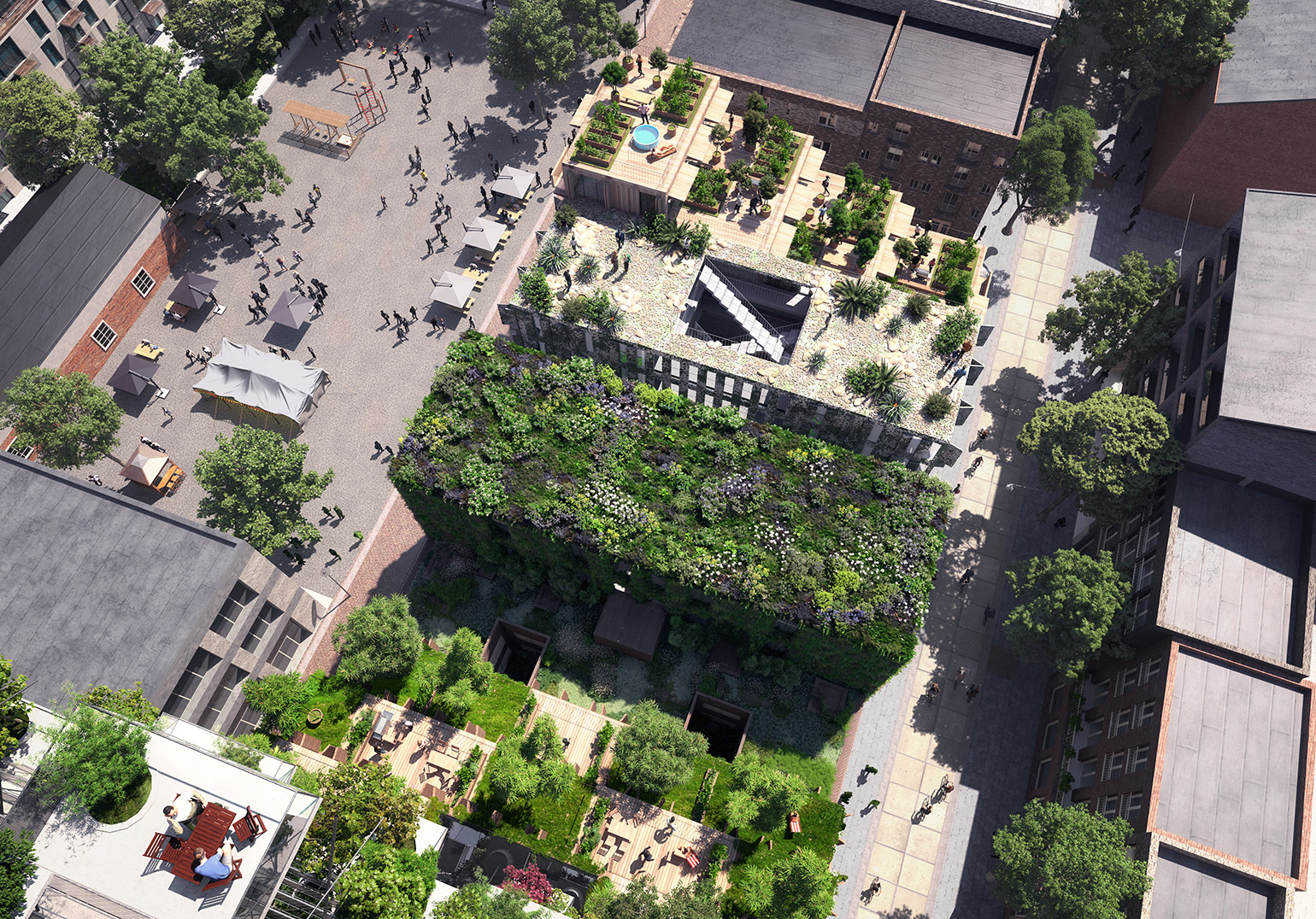
De Oosterlingen will be located at the entrance to the island, next to the neighborhood square. Real estate developer Being and the Amsterdam housing corporation Stadgenoot wanted a green, people-focused street that would form a striking entrance to the neighborhood. MVRDV designed seven adjoining buildings, each with its own identity, its own living style organized around a collective space and rooftop, and its own contribution to greening the city. At one end is “the greenhouse” and then, in order, are “the beekeeper”, “the lump”, “the garden”, “the house”, “the rock”, and “the birdhouse”.
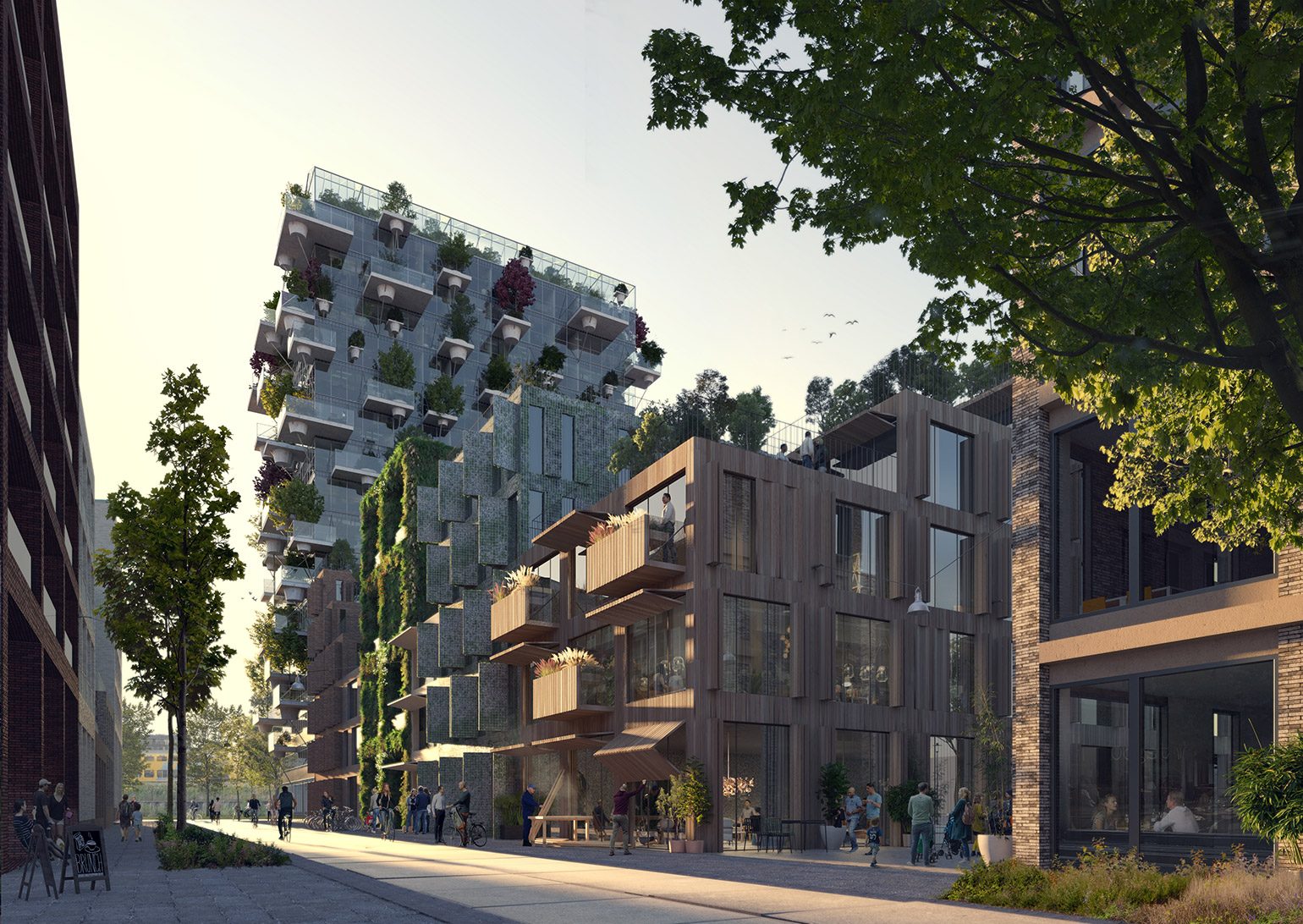
Together, the seven buildings comprise a green lab, or green expo. The buildings are stepped, with terraces leading up from the lowest buildings to the tower at one end. The roofs of the lower buildings will be activated with gardens, an apple orchard, urban farming, or a rooftop forest. In addition to these low-tech solutions which help generate very low emissions, there are also numerous practical interventions to achieve a holistic sustainable vision.
Emulating the area’s historical warehouses, a number of these façades open up by means of folding shutters and canopies, as well as balconies and other features that appear as if they have also been created by folding the building’s skin. The folding, sliding and hinging create a lively palette of facades, each notably different from the others yet still related. In addition to their solar and thermal quality, the shutters, canopies, and sliding doors also offer privacy to residents — they can open and close the façade as they please.
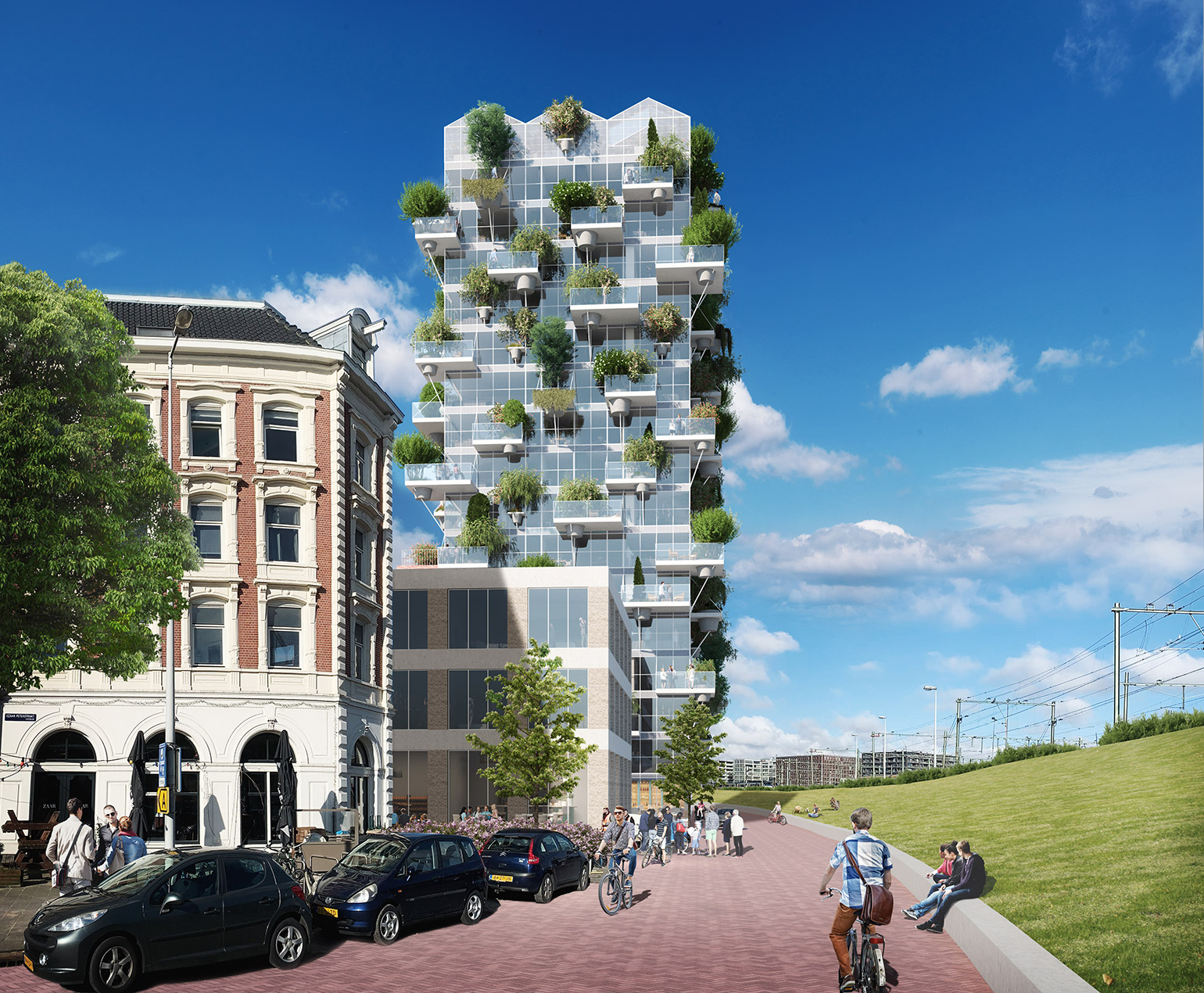
“It will be a green complex that, in my view, is not only good for people but also for birds and insects”, says MVRDV Founding Partner Winy Maas. “One building will be made of rammed earth, an ancient and sustainable building method; another will have a completely green facade. Nesting boxes for house sparrows, swifts and bats will also be integrated into various façades. They create a cute street in the best Amsterdam tradition, but much greener.”
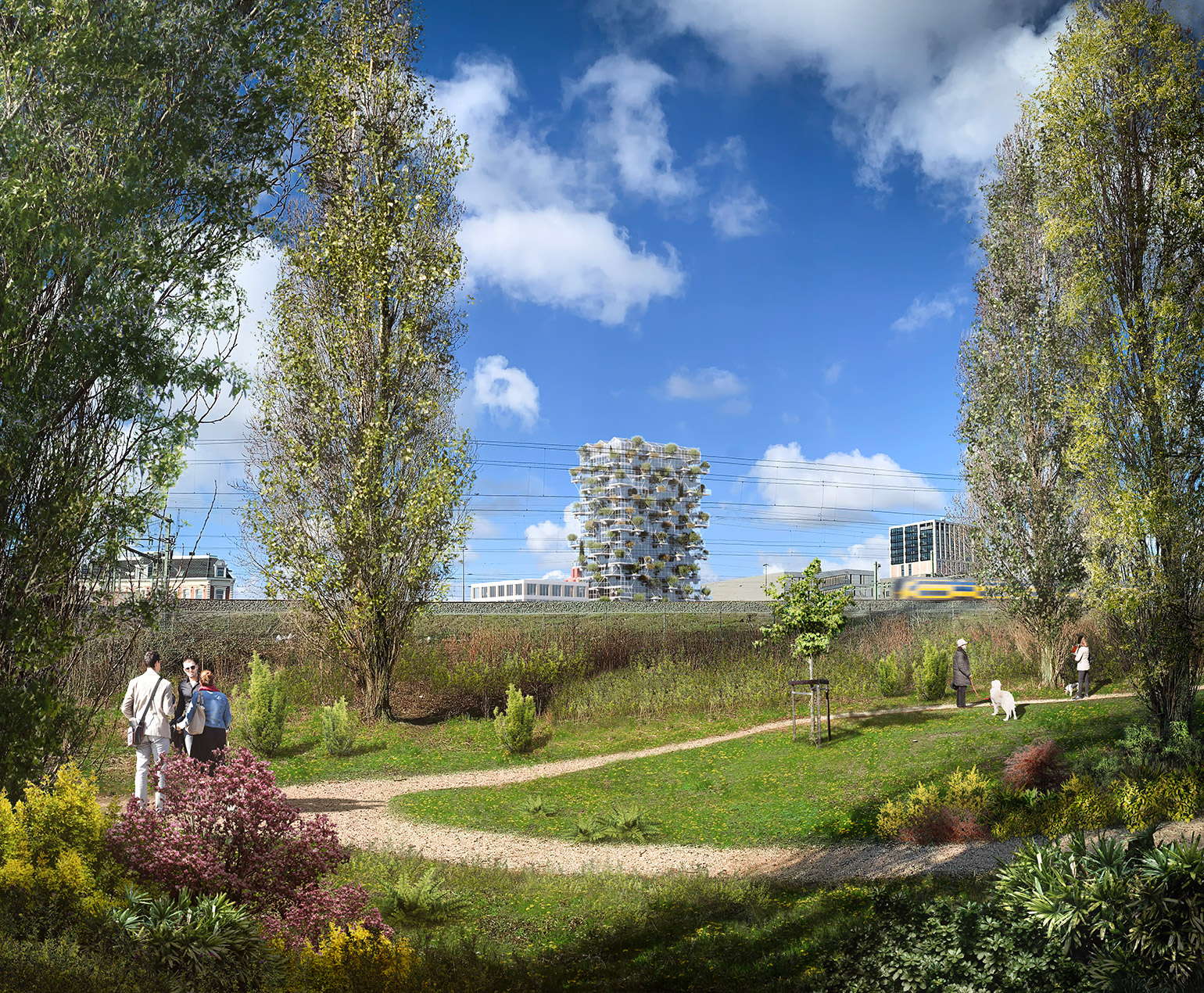
The human dimension is a central consideration in the scheme; walking routes have been designed so that residents can easily meet each other, promoting a sense of community. The complex has both lively and calm zones to provide suitable spaces for everyone. The development will comprise 144 homes for a variety of renters and owners, with 1,000 m2 of space reserved in the plinths of the buildings for various facilities, including catering establishments, a shop for healthy food, a small private cinema for 12 people, and a social impact factory intended for companies involved in social entrepreneurship. Construction is expected to start in late 2022.
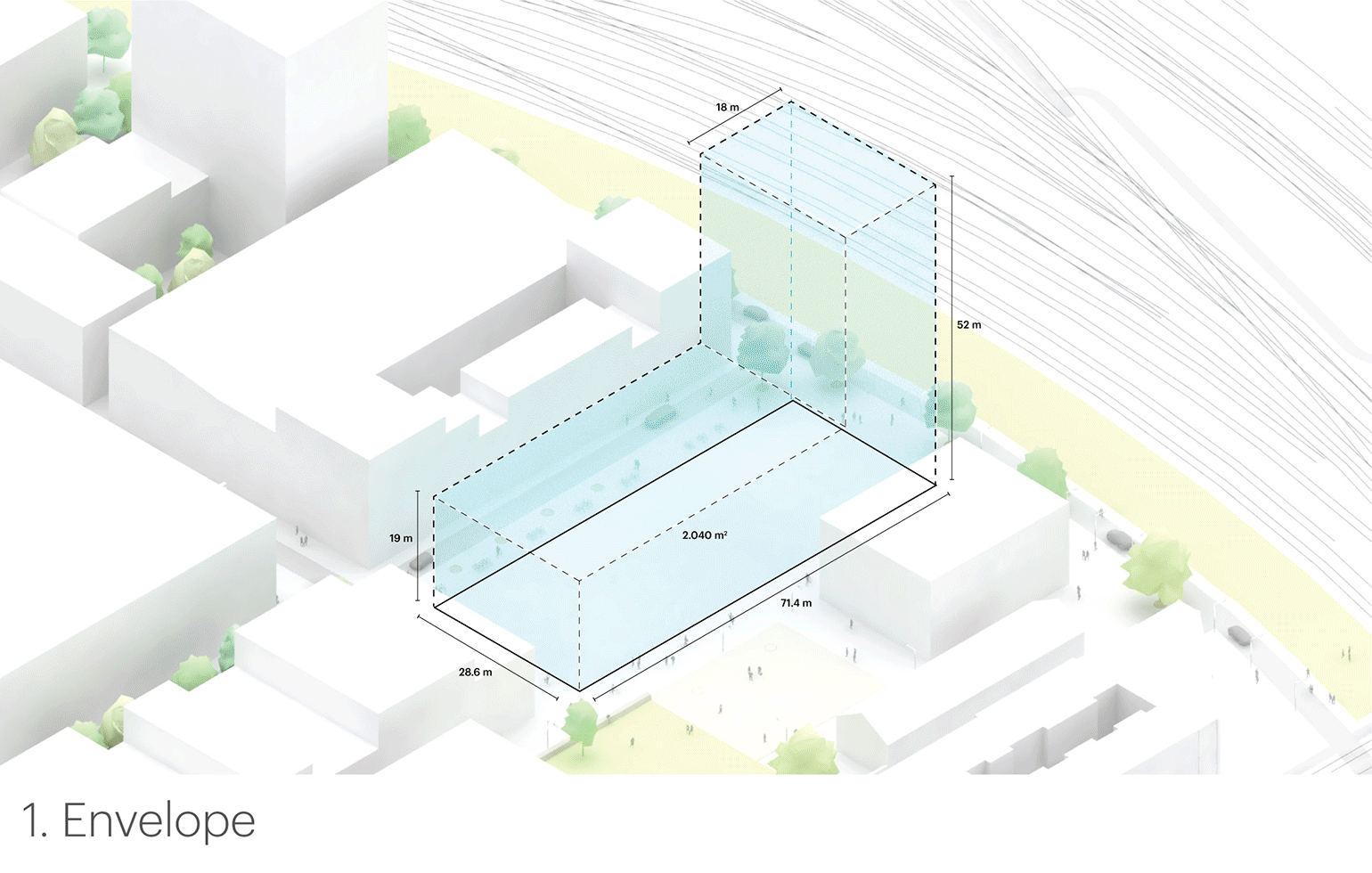
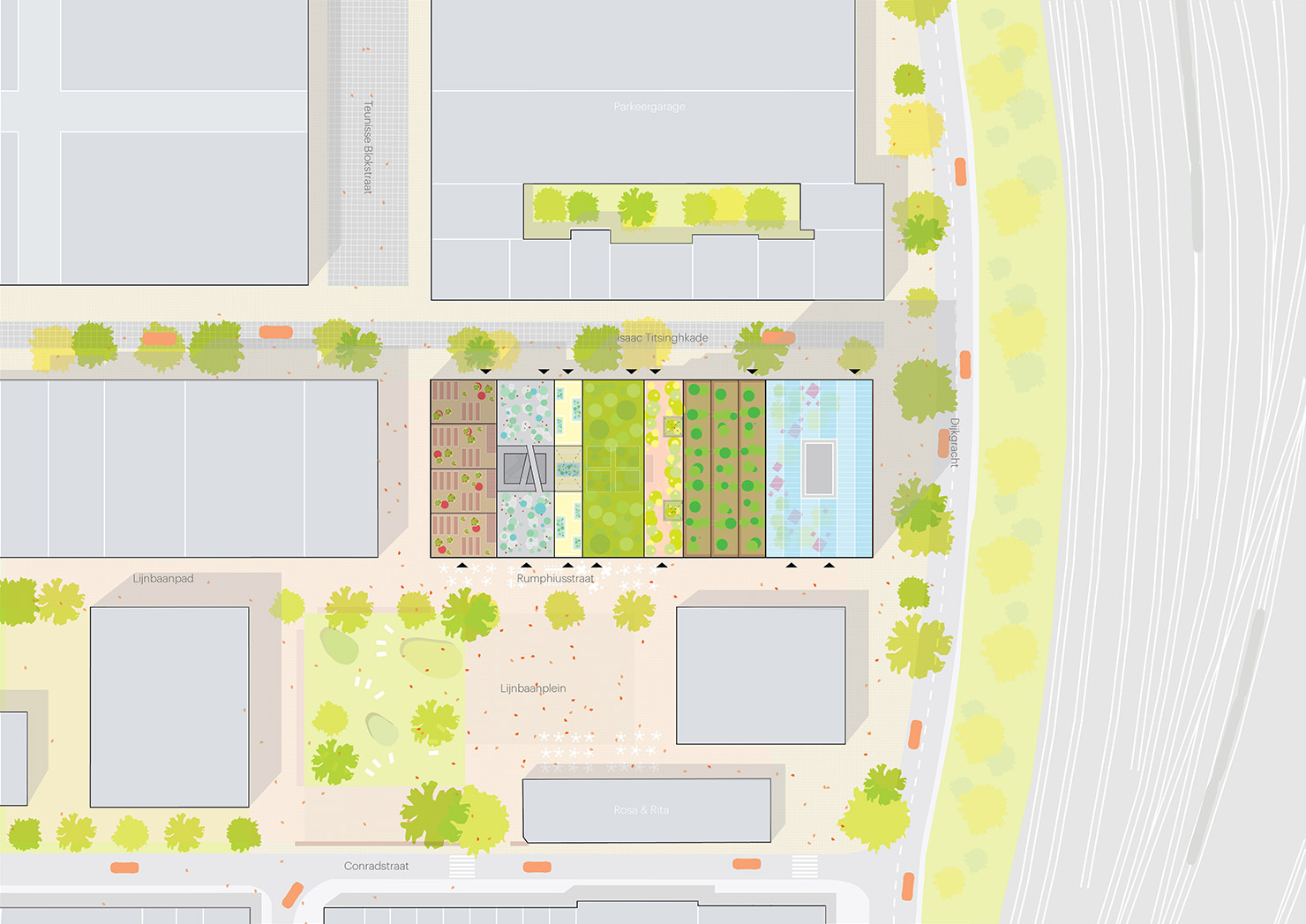
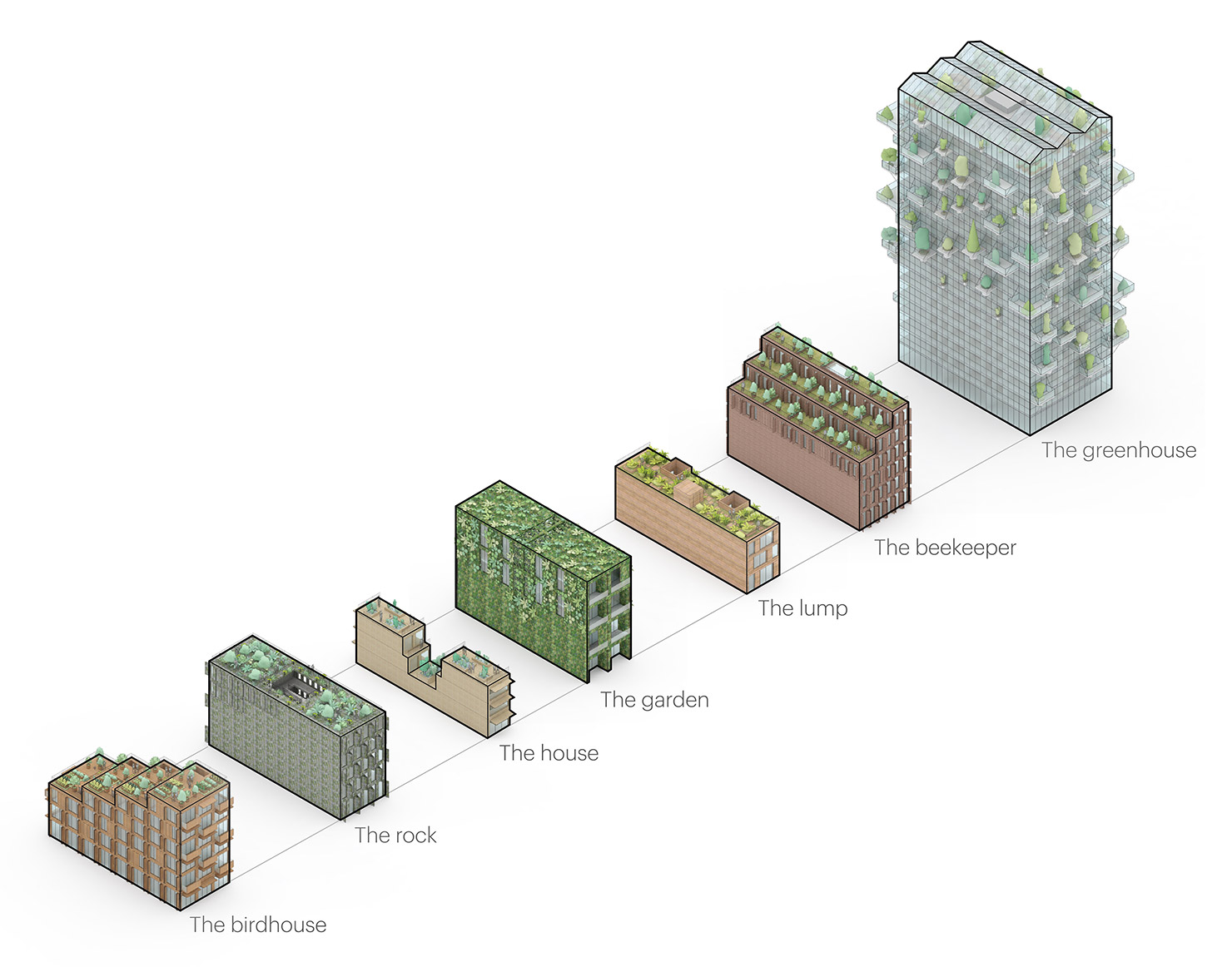
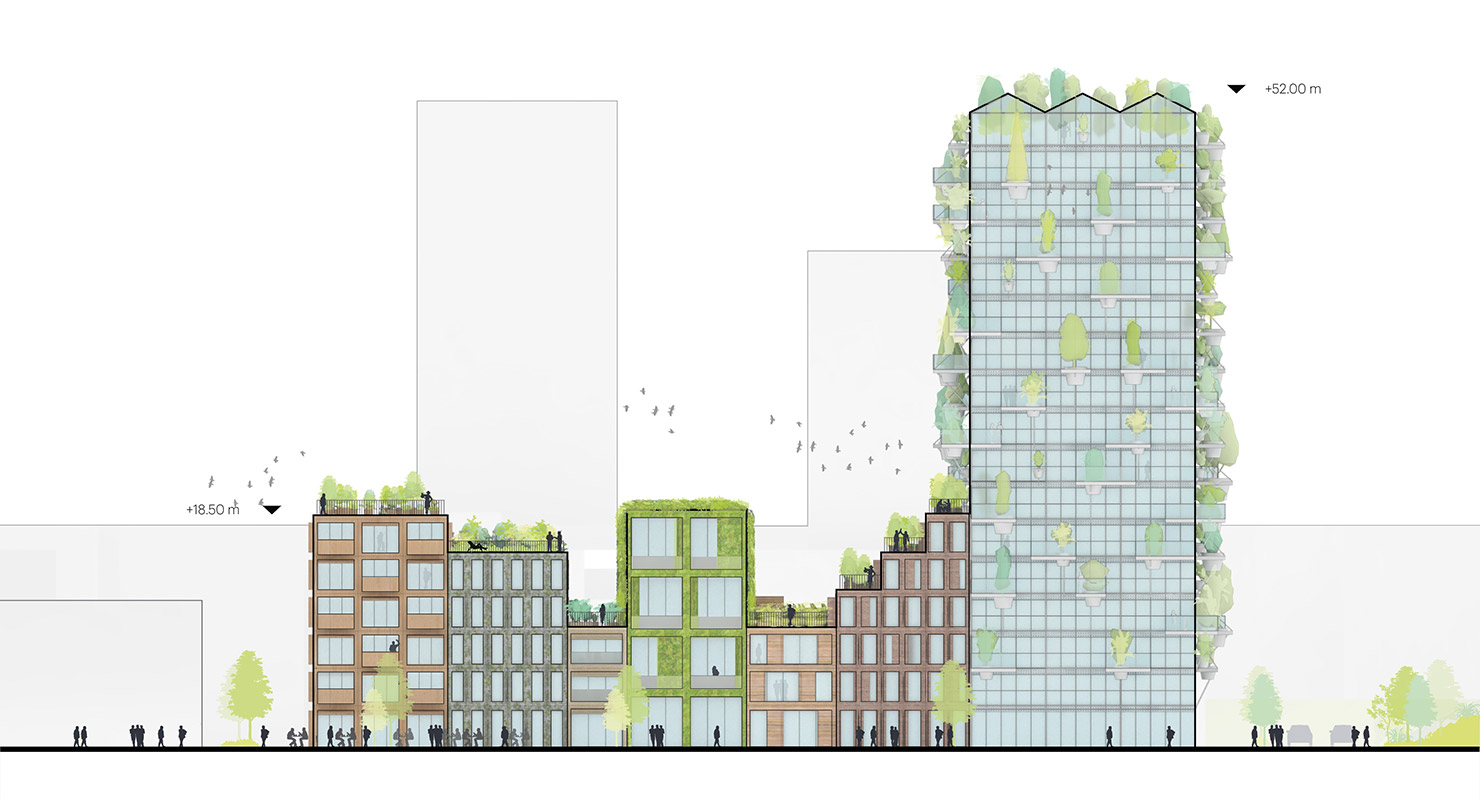
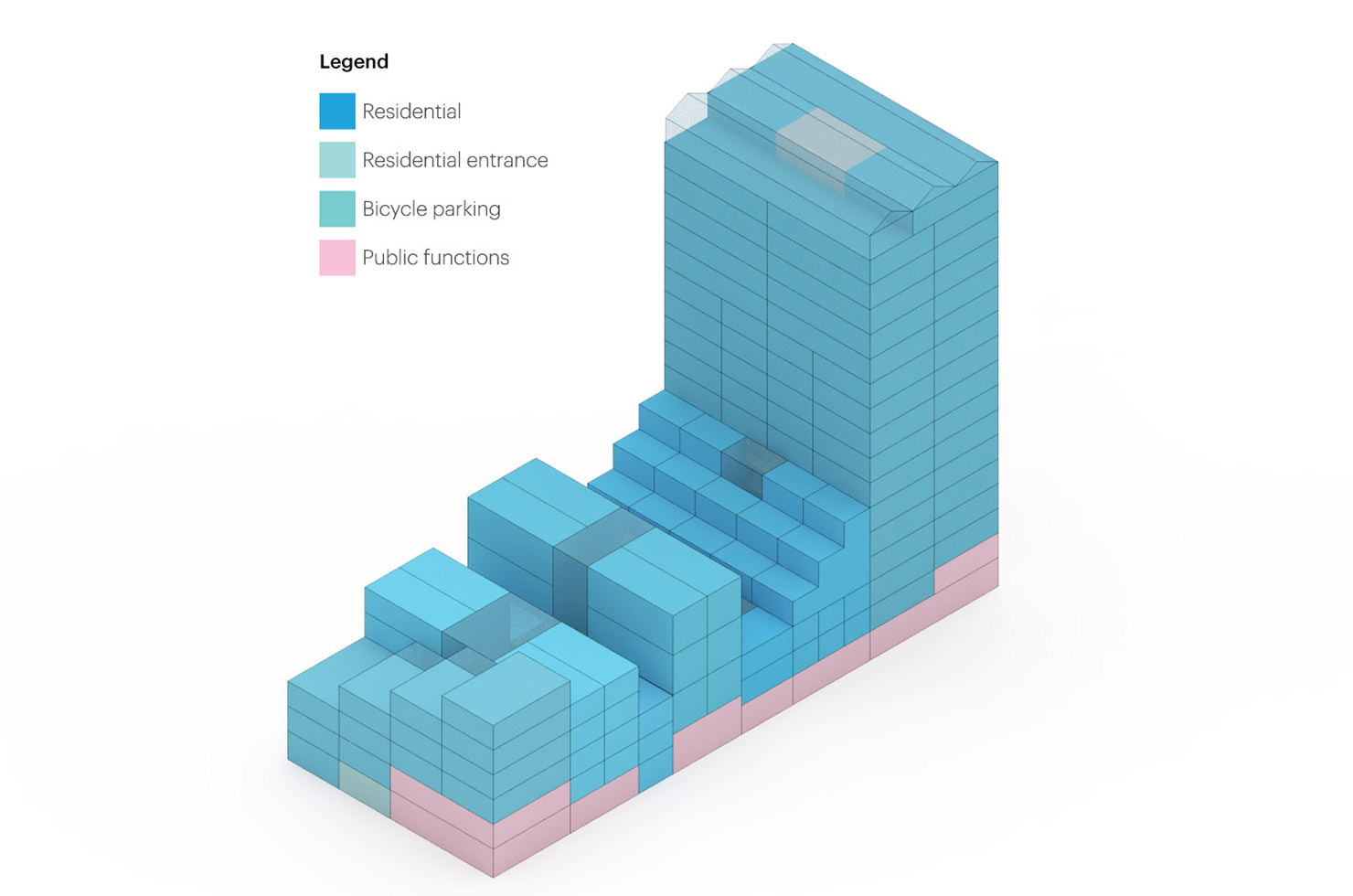
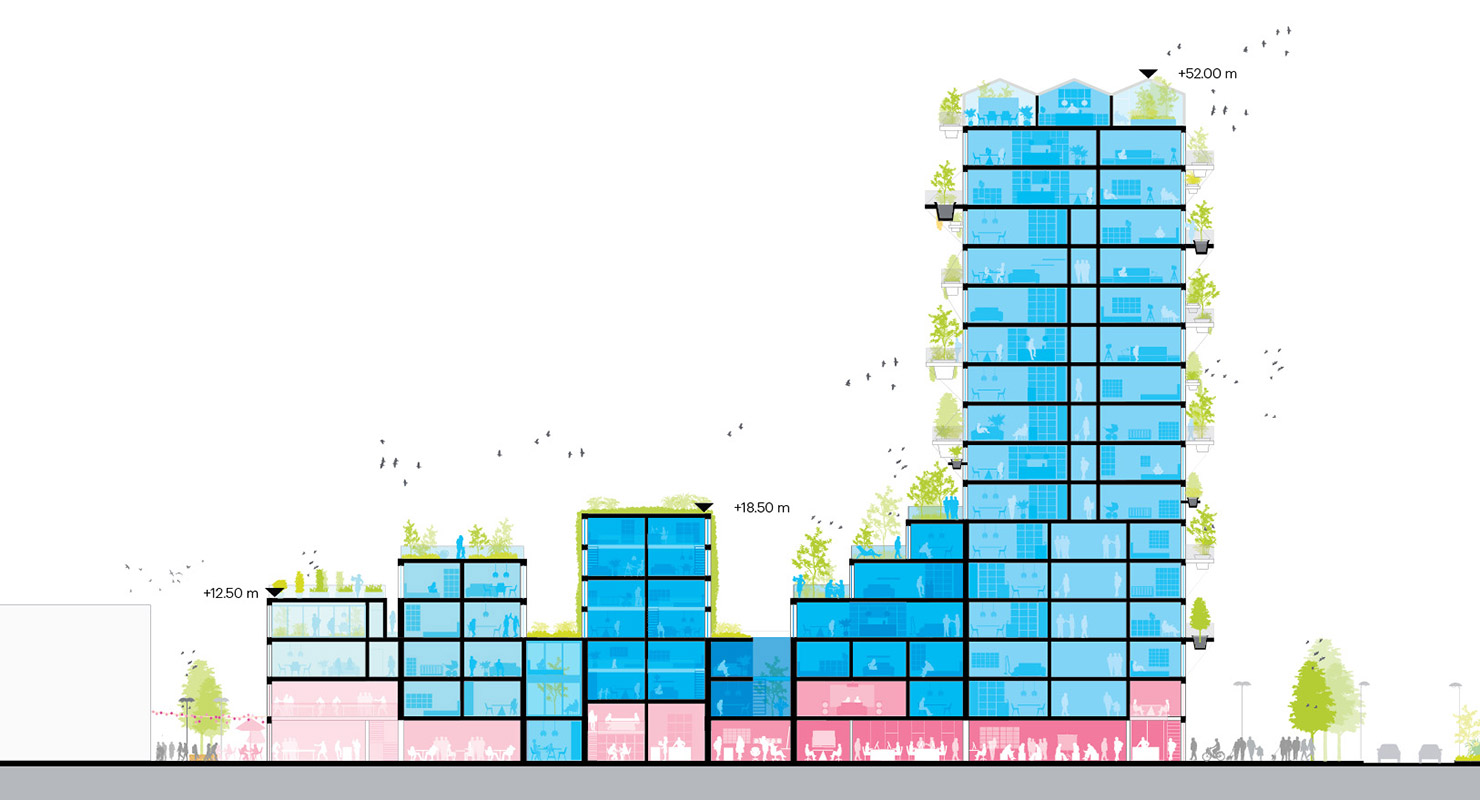
PROJECT NAME: De Oosterlingen
LOCATION: Oostenburg, Amsterdam
YEAR: 2021
CLIENT: Being Development
SIZE AND PROGRAMME: 13,950 m2 (Residential, retail)
ARCHITECT: MVRDV
FOUNDING PARTNER IN CHARGE: Winy Maas
PARTNER: Stefan de Koning
DESIGN TEAM: Winy Maas, Stefan de Koning, Ronald Hoogeveen, Karin Houwen, Floris Dreesmann, Jasper Van der Ven, José Manuel Garcia Garcia, Katarzyna Nowak, Mariya Gyaurova, Olly Veugelers, Helena Kajszczak; Magdalena Dzambo (BD); Luca Coca, Francesco Vitale, Jaroslaw Jeda (VIZ)
PROJECT COORDINATION: Carla Sitarenios
VISUALISATIONS: Antonio Luca Coco, Francesco Vitale, Jaroslaw Jeda
STRATEGY AND DEVELOPMENT: Magdalena Dzambo
IMAGES: Proloog, MVRDV
COPYRIGHT: MVRDV 2018 – (Winy Maas, Jacob van Rijs, Nathalie de Vries)
LANDSCAPE ARCHITECT: DELVA Landscape Architecture/Urbanism
ENVIRONMENTAL PSYCHOLOGIST: De omgevingspsycholoog Contractor: IMd Raadgevende Ingenieurs
INSTALLATION TECHNICAL ADVISOR: Arup
BUILDING PHYSICS: DGMR
BUILDING COSTS ADVISOR: IGG Bouweconomie

